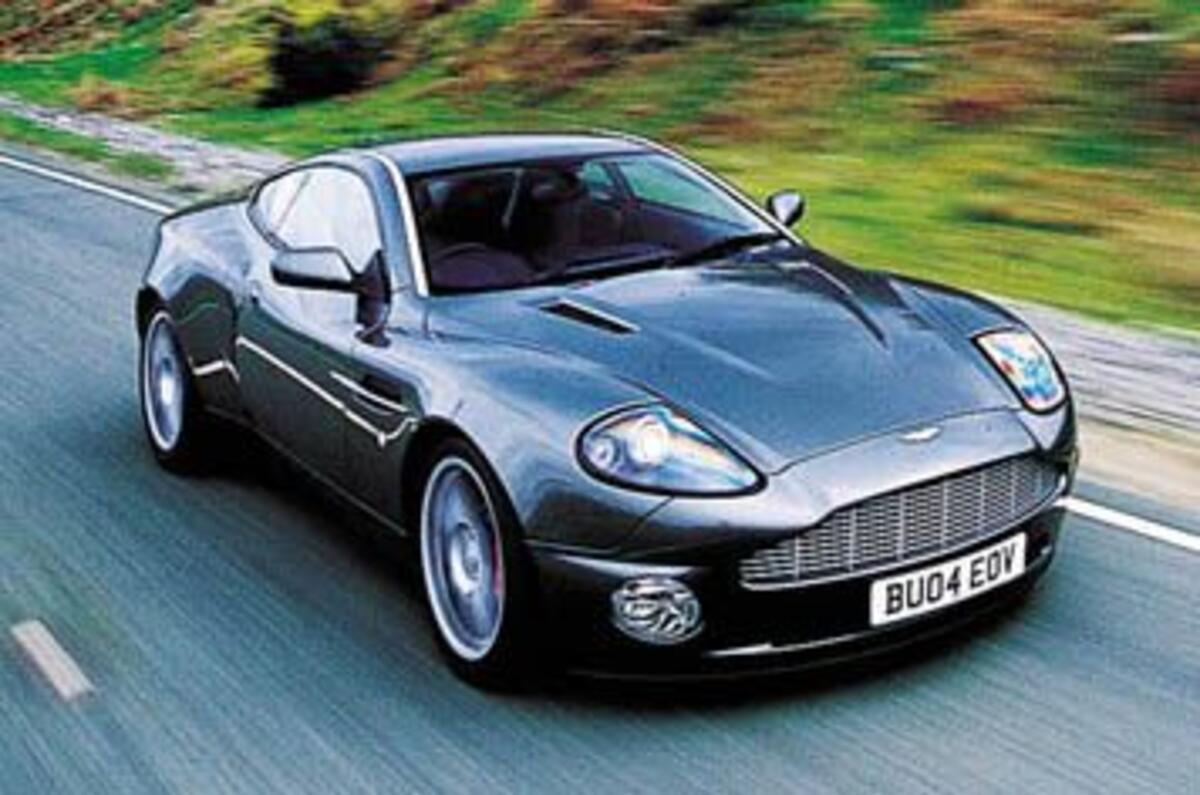This morning dawned cold and clear. At 4.30am, I was walking out of a small Welsh cottage at the foot of the Brecon Beacons. In the half-light, I made my way across the drive to where the Vanquish waited.
At any time, in any place, an Aston Martin Vanquish is a thing to behold. But with the first rays of the new day glancing off the fine film of dew that had formed on its haunches, it had an almost ethereal beauty. I felt a spontaneous spasm of laughter burst out into the silent air. In that environment it was ridiculously, comically beautiful. And it was mine.
Read about the updated Aston Martin Vanquish here
It had been a while. Three years ago I wrote Autocar’s road test on the car. I can remember how quickly it gained 175mph and how slowly it lost it again. The brakes were barely adequate. It hit 60mph in 4.4sec despite the need for a slow gearchange, but its handling was more grand tourer than sports car. It clung on well, but was as willing as Thatcher to change direction once its trajectory had been determined. Since then I’ve driven just two more, neither for long enough to be instructive.
This Vanquish is designed to address these issues. It doesn’t look different, save for the nine-spoke alloys replacing the 12-spokers of the original, but beneath lies a car on which attention has been lavished in every area of its chassis’ endeavour: springs, dampers, suspension layout, steering and brakes.
In the words of Aston CEO, Ulrich Bez, the changes are to make the Vanquish ‘slightly sportier and more focused’ and to that end it comes complete with stronger front uprights, shorter springs, firmer damping and a new front suspension wheel bearing assembly. The steering arms have been shortened, speeding up the helm by 20 per cent, and the ride height dropped by 5mm.
Those new wheels reduce unsprung weight, but the real news is behind them: at the front the Brembo brake discs have been increased from 355mm to 378mm and have a 33 per cent greater thermal capacity in an attempt to eliminate the fade of the old system. The front callipers now have six instead of four pistons to give a 21 per cent increase in pad area. At the rear the discs retain their 330mm diameter but are 2mm thicker. Finally, Pagid competition pads are used.
The original specification Vanquish remains, for a saving of £3000, but I suspect this is a similar strategy to that employed by leaving the six-cylinder DB7 in production after the introduction of the V12 Vantage. In practice, no one wanted one and it was quietly dropped.
None of this was obvious as I trickled out onto the road. The sound of its 460bhp, quad-cam, V12, 48-valve engine still moves you from the moment the first spark-plug fires and you find yourself warming it through gently, giving time for heat to build in the engine, gearbox and shock absorbers. It’s silly, really, as the engine’s heritage is linked to two conjoined Mondeo V6s, the gearbox’s to a Chrysler Viper – but it’s easy to expel such matters from your mind.
Then the time was right. Four tugs on the left-hand paddle and gearbox leapt seamlessly from a loping sixth to a screaming second. Throttles wide open, it sat back, gathered itself and speared forward. Listening to the noise, I almost convinced myself I could break down its components into every punch of a piston, whizz of a valve and sweep of the crankshaft, so multi-layered and well-defined is its note.



















Add your comment